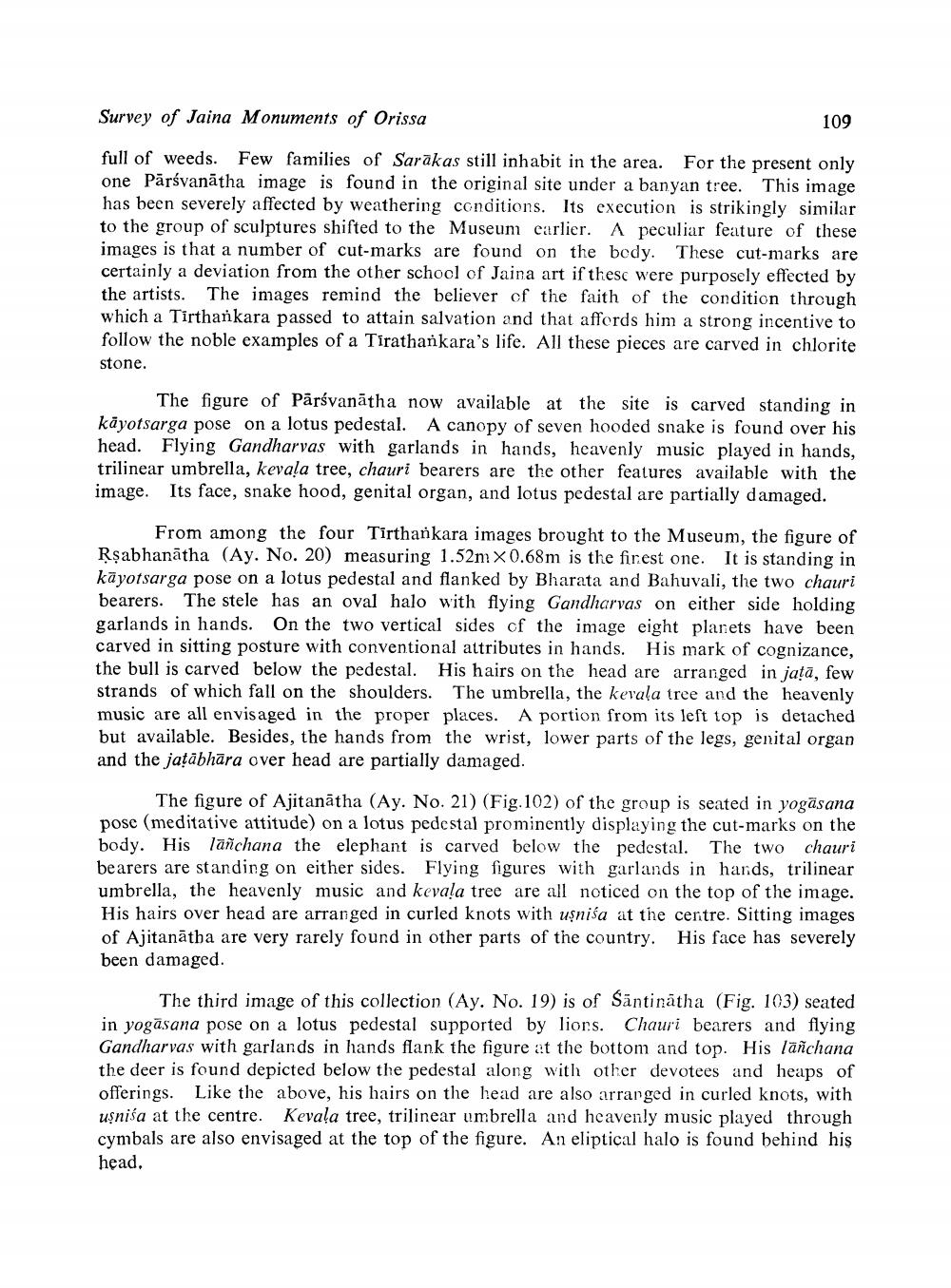________________
Survey of Jaina Monuments of Orissa
109
full of weeds. Few families of Sarākas still inhabit in the area. For the present only one Pārsvanātha image is found in the original site under a banyan tree. This image has been severely affected by weathering conditions. Its execution is strikingly similar to the group of sculptures shifted to the Museum carlier. A peculiar feature of these images is that a number of cut-marks are found on the body. These cut-marks are certainly a deviation from the other school of Jaina art if these were purposely effected by the artists. The images remind the believer of the faith of the condition through which a Tirthankara passed to attain salvation and that affords him a strong incentive to follow the noble examples of a Tirathankara's life. All these pieces are carved in chlorite stone.
The figure of Pārsvanātha now available at the site is carved standing in käyotsarga pose on a lotus pedestal. A canopy of seven hooded snake is found over his head. Flying Gandharvas with garlands in hands, heavenly music played in hands, trilinear umbrella, kevala tree, chauri bearers are the other features available with the image. Its face, snake hood, genital organ, and lotus pedestal are partially damaged.
From among the four Tirthankara images brought to the Museum, the figure of Rşabhanātha (Ay. No. 20) measuring 1.52m x 0.68m is the firest one. It is standing in kāyotsarga pose on a lotus pedestal and flanked by Bharata and Bahuvali, the two chauri bearers. The stele has an oval halo with flying Gandharvas on either side holding garlands in hands. On the two vertical sides of the image eight planets have been carved in sitting posture with conventional attributes in hands. His mark of cognizance, the bull is carved below the pedestal. His hairs on the head are arranged in jata, few strands of which fall on the shoulders. The umbrella, the kevala tree and the heavenly music are all envisaged in the proper places. A portion from its left top is detached but available. Besides, the hands from the wrist, lower parts of the legs, genital organ and the jațābhāra over head are partially damaged.
The figure of Ajitanātha (Ay. No. 21) (Fig. 102) of the group is seated in yogasana pose (meditative attitude) on a lotus pedestal prominently displaying the cut-marks on the body. His lañchana the elephant is carved below the pedestal. The two chauri bearers are standing on either sides. Flying figures with garlands in hards, trilinear umbrella, the heavenly music and kevala tree are all noticed on the top of the image. His hairs over head are arranged in curled knots with uşnisa at the centre. Sitting images of Ajitanātha are very rarely found in other parts of the country. His face has severely been damaged.
The third image of this collection (Ay. No. 19) is of Sāntinātha (Fig. 103) seated in yogasana pose on a lotus pedestal supported by lions. Chauri bearers and flying Gandharvas with garlands in hands flank the figure at the bottom and top. His lāñchana the deer is found depicted below the pedestal along with other devotees and heaps of offerings. Like the above, his hairs on the head are also arranged in curled knots, with uşniša at the centre. Kevala tree, trilinear umbrella and heavenly music played through cymbals are also envisaged at the top of the figure. An eliptical halo is found behind his head.




